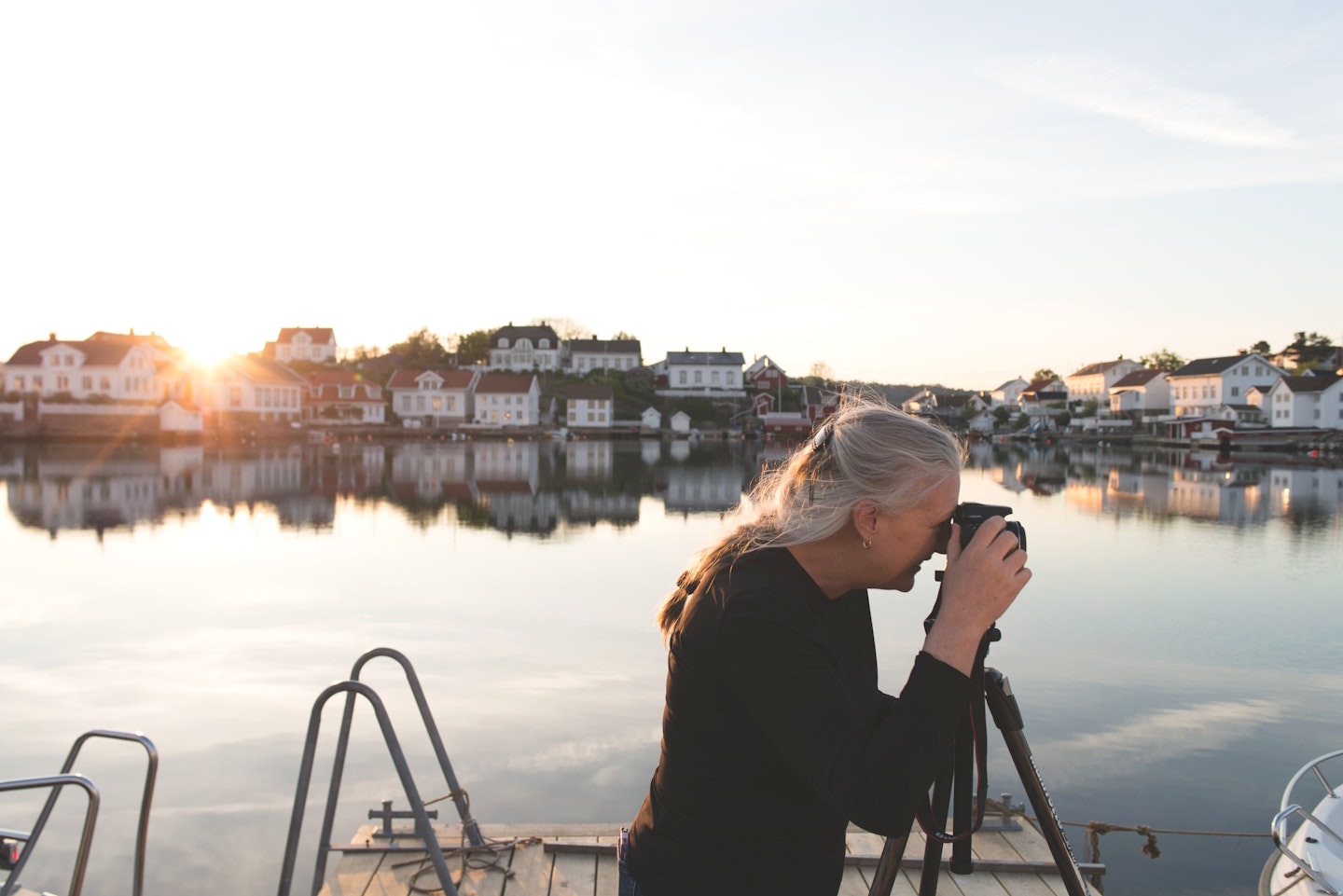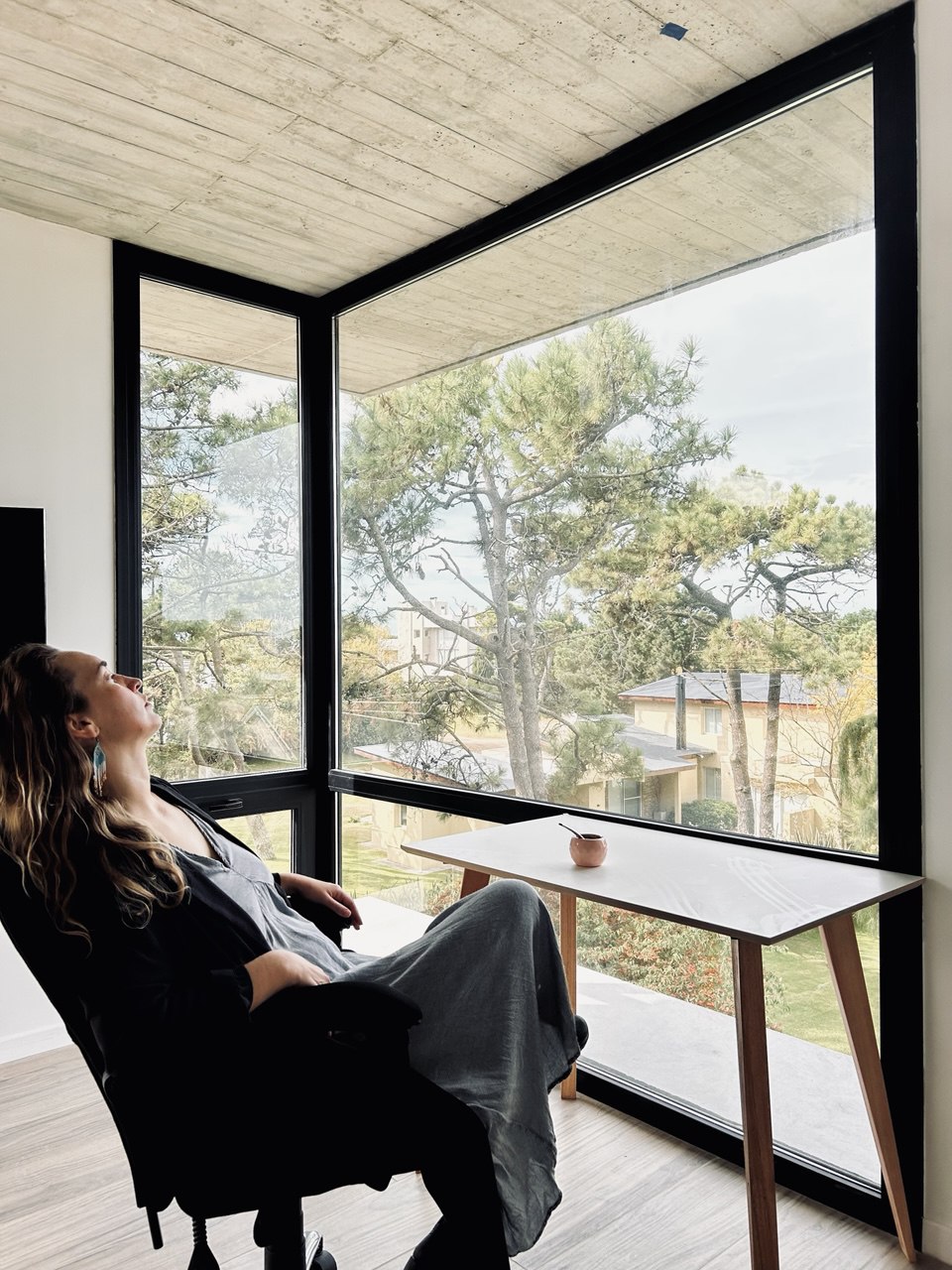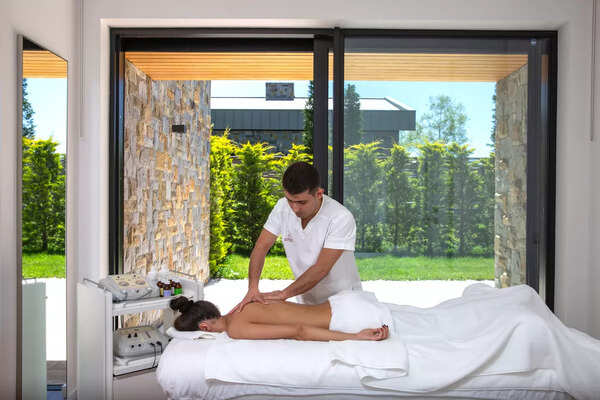Rushed itineraries and nonstop sightseeing no longer define the dream getaway. Travelers today are shifting toward experiences that allow for depth, rest, and genuine cultural connection. That’s where slow travel steps in—offering more than just scenic routes or hidden gems. It encourages meaningful stays, personal well-being, and mindful exploration that can’t be replicated by whirlwind tours. With rising burnout from fast-paced lifestyles, this movement is resonating deeply with those craving intention and authenticity. If your idea of luxury includes presence, purpose, and peace, this evolving travel style may be exactly what your next journey needs. Here’s why it’s gaining serious momentum.
Deep Cultural & Community Connection

Walking through a village market or sharing a meal with locals creates emotional impressions no guidebook can replicate. Slow travel isn’t just about lingering longer—it’s about building genuine connections with the people who shape a place’s identity. Travelers who take the time to engage in conversations, join local workshops, or participate in community events naturally gain insight into customs, stories, and traditions that define regional culture. From attending a neighborhood festival in Andalusia to volunteering on a permaculture farm in Thailand, every moment spent intentionally leads to richer, more authentic memories. This form of meaningful immersion fosters mutual respect between guests and hosts, encouraging travelers to be participants instead of spectators. Unlike fast-paced sightseeing where interactions are often transactional, slow journeys favor trust-building over ticking off attractions. This cultural exchange supports responsible tourism, boosts social awareness, and often results in long-term friendships. As the desire for ethical, experience-first travel continues to rise, many are valuing heartfelt human connection over picture-perfect itineraries. It’s no longer about seeing more—it’s about feeling more, remembering more, and understanding deeper. Community-based tourism has quietly become a pillar of luxury travel for those who crave depth, empathy, and a true sense of place.
Authenticity Over Itinerary Checklists

There’s a growing shift from scripted travel toward experiences that unfold naturally and reflect real life. Many travelers are trading rigid schedules and commercial highlights for open days, unexpected encounters, and spontaneous joys. Instead of chasing top-rated landmarks or following influencer trends, they now prioritize authenticity—meeting artisans in their workshops, sipping local wine where it’s made, and simply observing the rhythm of a foreign morning. Slow travel makes space for these organic moments. It encourages travelers to listen rather than rush, to engage rather than consume. With fewer time constraints, each day becomes an opportunity to connect with local flavors, dialects, and daily rituals. The pressure to “see it all” fades, replaced by the pleasure of truly being somewhere. Whether staying in a centuries-old farmhouse in Tuscany or wandering coastal trails in Portugal, the depth of the experience far outweighs the quantity of attractions visited. Authenticity is no longer a buzzword—it’s a luxury standard. Today’s mindful traveler finds more satisfaction in meaningful exchanges than in completing a list. The deeper the roots in each destination, the more profound the memories, making slow travel not just a style, but a statement of values.
Lower Cost-Per-Day than Fast Travel

Stretching your travel budget doesn’t always mean cutting corners—it can mean staying longer, spending less per day, and gaining more. Slow travel often leads to significant savings without compromising comfort or experience. By staying in one place for extended periods, travelers can access long-term rental discounts, cook their own meals, and rely on local transport instead of costly tours. The expenses of constant movement—frequent flights, hotel turnover, taxis, and entry fees—add up quickly in fast-paced travel. In contrast, slow travelers embrace local life, which is often cheaper and more sustainable. For digital nomads, extended stays in places like Bali, Lisbon, or Mexico City allow for a high quality of life on modest daily budgets. Markets instead of restaurants, public transit over car hires, and fewer souvenir splurges all contribute to reducing costs while enhancing authenticity. This frugal luxury appeals to both younger backpackers and older retirees seeking value without sacrificing experience. It’s about spending money where it counts—on experiences, people, and memories rather than logistics and convenience. In the end, slow travel delivers a richer journey not only emotionally, but financially, redefining what luxury can look like.
Reduced Traveler Burnout & Enhanced Wellbeing

Packing in three cities in five days often leads to exhaustion rather than enrichment. Constant transitions—airports, check-ins, new languages—can quickly wear down even the most seasoned traveler. Slow travel provides an antidote to this burnout by reducing stressors and supporting mental, emotional, and physical wellbeing. Staying longer in one destination allows travelers to adapt naturally, maintain a routine, and develop a sense of place that soothes the nervous system. Mornings aren’t rushed. Days aren’t dictated by rigid schedules. Instead, energy is conserved for deeper engagement—whether that’s journaling on a terrace, practicing yoga at sunrise, or enjoying long, unhurried meals. This travel style fosters mindfulness and helps reset overstimulated minds. Jet lag, time pressure, and decision fatigue become far less intense. When movement is slower, rest becomes integral—not something squeezed in between checkmarks. Many report returning from slow travel feeling refreshed instead of depleted, with improved mood and clarity. It’s not just about wellness-themed vacations—it’s the rhythm of travel itself that promotes a healthier experience. As more people seek balance and intentional living, slow travel offers the space to breathe, reflect, and truly enjoy each moment.
Eco-Conscious Transport: Trains, Bikes, Walks

Opting for earth-friendly transport isn’t just a sustainability trend—it’s a core philosophy of slow travel. Choosing trains over planes, cycling over taxis, or simply walking through neighborhoods reduces carbon impact and deepens the experience of a place. Rail journeys, like those through Japan or the Swiss Alps, offer panoramic views, relaxed seating, and a pace that encourages reflection. Biking through countryside lanes or exploring cities on foot allows travelers to notice subtle details—local graffiti, aromatic food stalls, quiet courtyards—that are often missed when speeding by. These transport choices also align with local living and support environmental preservation. The slower the movement, the greater the environmental and cultural appreciation. Avoiding the heavy emissions of short-haul flights or private car rentals contributes to climate-conscious tourism and empowers travelers to align their values with their travel habits. It’s not about going off-grid, but about moving with intention. Those who adopt this approach often find the journey itself becomes a highlight, not just the destination. For today’s conscious travelers, responsible transport isn’t a compromise—it’s a privilege that brings richness, story, and sustainability into every leg of the trip.
Supporting Local Economies & Small Businesses

Dining in family-run bistros, booking locally-owned stays, or buying directly from artisans makes a tangible difference in the places travelers visit. Slow travel emphasizes this kind of intentional spending, ensuring that tourism dollars stay within communities rather than flowing to global chains or tour monopolies. When travelers choose to support farmers markets, craft collectives, and regional guides, they help sustain jobs, preserve traditions, and fuel local innovation. The impact is visible and personal—real faces behind the services. Many destinations have seen revitalization through this model, especially in rural or under-touristed areas. Unlike mass tourism, which often extracts more than it contributes, slow travel leaves places better than it found them. From organic vineyards in France to co-op homestays in Nepal, travelers gain richer experiences while empowering the communities that host them. Economic inclusion becomes part of the luxury—the satisfaction of knowing your trip supported someone’s livelihood. As conscious consumerism becomes mainstream, travelers are rethinking where their money goes. This shift not only benefits local economies, but also builds more equitable and culturally respectful travel ecosystems.
Extended Stays for Real Immersion

Checking in for just a few days rarely offers more than a surface glance. Extended stays, by contrast, allow travelers to experience daily life in ways that go far beyond sightseeing. Renting a local apartment, learning the language basics, shopping at neighborhood markets—these actions foster genuine familiarity with a place. Over time, travelers begin to recognize patterns, faces, and rhythms, forming a relationship with the community that quick visits simply can’t replicate. Immersion leads to better understanding, richer stories, and a more authentic sense of belonging. Whether it’s spending three weeks in Kyoto or two months in Oaxaca, the deeper time investment reveals subtleties of culture, history, and values. This approach isn’t just about slowing down; it’s about deepening in. The longer the stay, the more nuanced the experience becomes. For many, this shift changes the way they travel forever—moving from tourist to temporary local. Extended stays are now seen as the new luxury, not for extravagance, but for the privilege of connection and continuity.
Unlikely Playlists: Detours & Serendipity

Wandering off-course often leads to moments that become the soul of a trip. Slow travel creates room for these spontaneous detours—those quiet coffee shops stumbled upon by accident, the local parade that halts traffic, the conversation with a stranger that turns into a dinner invitation. Without rigid itineraries, travelers can embrace the unexpected, which often holds more meaning than anything found in a guidebook. These unplanned experiences shape personal travel stories that feel less like tourism and more like lived memories. By resisting the urge to constantly move on, the slow traveler invites chance to work its magic. This flexibility encourages exploration beyond popular spots—venturing into alleys, rural backroads, and overlooked neighborhoods where authentic life unfolds. Sometimes it’s an old record store in Lisbon, other times a family farm stay found through word of mouth. What makes these discoveries remarkable is their randomness—and the openness required to notice them. Every detour has potential, and in slow travel, time becomes the luxury that allows room for serendipity. These unscripted moments are often the ones most fondly remembered, reminding travelers that the journey matters as much as the destination.
Mindful Unplugging + Digital Detox

Turning off notifications and setting down the phone can completely reshape how a place is experienced. In today’s hyper-connected world, slow travel offers a rare invitation to unplug. By removing digital distractions, travelers become more present—tuning into the sights, sounds, and smells around them. Meals taste better when they aren’t filtered for social media. Conversations go deeper when not interrupted by a scroll. And quiet mornings hold clarity when screens are kept aside. Disconnecting doesn’t mean isolation; it means choosing intentional connection—with surroundings, people, and self. Many slow travelers build in tech-free hours or choose destinations with limited connectivity, allowing nature, culture, and community to take center stage. Whether journaling under olive trees or observing life from a train window, screen-free travel fosters mindfulness and emotional presence. The world slows down, and with it, the mind begins to rest. This sense of digital freedom has become a cornerstone of slow travel, attracting those burnt out from constant alerts and algorithm-driven content. For travelers seeking to recharge mentally and emotionally, unplugging isn’t just beneficial—it’s become a quiet form of luxury.
Luxury Trains as Signature Slow Experiences

Not all slow travel happens on foot—sometimes it glides across tracks in vintage elegance. Luxury trains have reemerged as one of the most coveted ways to journey, offering a blend of comfort, nostalgia, and immersive scenery. Whether winding through the Scottish Highlands on the Royal Scotsman or sipping afternoon tea aboard the Venice Simplon-Orient-Express, these experiences offer more than just transport. They deliver atmosphere, storytelling, and an unhurried pace where the journey becomes the main event. Passengers enjoy gourmet meals, curated excursions, and plush sleeping quarters—all while traveling through landscapes that reveal themselves slowly and dramatically. Unlike flights or highways, these trains connect travelers to history and heritage, often retracing iconic routes. For many, they symbolize a return to travel as an art form—rich in details, service, and soul. Each stop offers glimpses into regional cultures, but the true charm lies in the movement itself: steady, rhythmic, and unrushed. In an age obsessed with speed, luxury trains remind us that slowness can still be indulgent. For those seeking elegance without hurry, rail journeys offer a timeless, refined version of the slow travel ethos.
“Slowcations”: Long, Intentional Getaways
Rather than cramming experiences into a packed long weekend, more travelers are opting for intentional getaways that prioritize presence over productivity. Known as “slowcations,” these trips focus on staying in one location for an extended period—allowing space to rest, reflect, and explore without pressure. Instead of jumping between cities or attractions, slowcationers rent homes, join local classes, and settle into neighborhood life. Mornings stretch leisurely. Evenings invite long meals and spontaneous strolls. There’s no urgency to check off attractions, which makes room for discovering joy in simple routines. This type of travel allows deeper engagement with one’s environment—connecting to local customs, natural rhythms, and even inner wellness. Many incorporate mindfulness practices, nature immersion, or journaling as part of the experience. These getaways are especially appealing to those recovering from burnout or seeking mental clarity. Without the exhausting pace of traditional vacations, slowcations offer rejuvenation in its truest form. Whether it’s a month in a coastal village or two weeks at a countryside retreat, the luxury lies in intentional slowness. This model continues to grow as travelers prioritize wellbeing and presence over photo ops and packed schedules.
Remote Work + Travel = Workations

Work doesn’t always have to tie people down to one place. With the rise of remote careers, many professionals now blend travel and productivity through “workations”—extended stays where they continue working while experiencing a new environment. Unlike rushed business trips or chaotic tourist vacations, workations support balance. Mornings may involve video calls, but afternoons unfold with coastal walks or cooking lessons. By staying weeks or months in one destination, workers get the best of both worlds: routine and novelty, structure and freedom. This shift has created a new category of slow travel that’s especially popular among digital nomads and hybrid professionals. Coworking spaces, long-stay rentals, and high-speed internet access now define travel plans more than tourist brochures. But what makes workations truly luxurious isn’t the ability to work from anywhere—it’s the power to choose a lifestyle of presence and purpose. Rather than escaping work, slow travel invites a reshaping of it. Productivity continues, but it’s no longer the only focus. With local immersion, cultural learning, and personal growth baked into daily life, workations are redefining what both travel and work can look like in modern life.
Sleep Tourism & Wellness-Focused Journeys

Rest has become the new status symbol, and travel is adapting accordingly. Sleep tourism—a trend where people travel specifically to improve their rest—is gaining momentum, especially within the slow travel movement. These wellness journeys prioritize deep sleep, circadian alignment, and overall rejuvenation. From sleep retreats in the Alps to sound healing stays in Bali, the focus is on optimizing mental and physical restoration. Many resorts now feature rooms with blackout systems, sleep-inducing scents, guided meditations, and even in-house sleep therapists. But beyond the amenities, what matters most is the slow pace that enables true rest. Without the pressure of jam-packed schedules, travelers have time to unwind, reflect, and listen to their bodies. This experience-centric model has deep appeal for those recovering from burnout, jet lag, or high-stress lifestyles. It’s not about indulgence—it’s about necessity. In a culture that often glorifies hustle, choosing to rest has become a bold act of self-care. For today’s conscious traveler, a trip that improves sleep is more than a luxury—it’s a transformational investment in long-term health and happiness.
Less Frequent Travel, More Revenue Per Trip

Frequent hopping between destinations often results in logistical costs that eat into travel budgets. Slow travel flips this model by encouraging fewer, longer, and more meaningful trips that deliver greater value per experience. By focusing resources on one extended journey rather than multiple brief ones, travelers gain deeper satisfaction while reducing transit costs and fatigue. This shift not only supports personal wellbeing, but also enhances how money is spent. Instead of scattering funds across flights, baggage fees, and quick hotel stays, slow travelers allocate their budgets toward high-impact moments—authentic meals, local workshops, meaningful excursions, and quality lodging. The per-trip investment goes further, creating richer stories and longer-lasting impressions. For many, this approach also supports environmental goals by cutting back on carbon-intensive flights. As financial consciousness becomes a key consideration in travel planning, slow travel offers a smart solution: fewer trips, deeper experiences, and better returns—emotionally, environmentally, and economically. It’s not just about saving money; it’s about spending with intention. The result? A more luxurious, responsible, and fulfilling way to journey.
Slow Travel as Holistic Lifestyle Choice

What began as a travel trend has evolved into a philosophy of living. Slow travel aligns closely with values like intentionality, sustainability, and presence—principles that many now aim to apply not only to vacations but to everyday life. Those who embrace slow journeys often carry its lessons back home: savoring meals, walking more, reducing digital noise, and choosing quality over quantity in all things. The mindset encourages a broader rethinking of consumption, connection, and time. It’s about prioritizing meaning over momentum. By valuing presence and mindfulness, slow travel fosters self-awareness and emotional clarity. It cultivates gratitude, resilience, and deeper human connections—both abroad and at home. For many, the shift isn’t temporary. They begin planning their lives, careers, and even homes around the rhythm of slowness. It becomes less about escape and more about integration. The real luxury is no longer about possessions or exclusivity—it’s about time well spent, in places that nourish, with people who matter. Slow travel, in this sense, represents a lifestyle of conscious living, emotional richness, and thoughtful engagement with the world.
